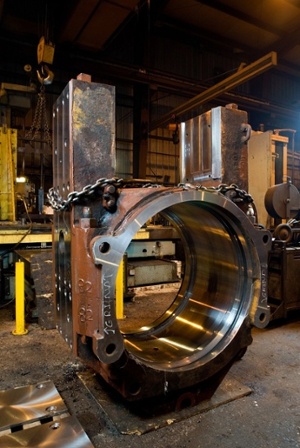
Ways to Seek Stability Amidst Steel Tariffs
April 18, 2018
While hysteria surrounding tariffs on steel and aluminum has dominated the news, very little coverage has focused on the impact on manufacturing costs. This is unfortunate as uncertainty surrounding these measures is the stuff that keeps supply chain managers up at night.
When pressed on the impact of import barriers, U.S. Commerce Secretary Wilber Ross indicated tariffs should improve competitiveness and bring back jobs. Yet, OEMs and their fabrication partners rely on price certainty for long-term planning, and the announcement has left more questions than answers.
Limited Potential for Disrupting Production
According to a recent report from Global Trade magazine, nearly two-thirds of aluminum and one-third of the steel used in the U.S. is imported. However, the impact on material costs depends on factors including country of origin, availability of alternative suppliers, contribution margin, and even current inventory at all levels of the supply chain.
While this doesn’t mean that the potential for impact won’t be felt in industries such as oil & gas, construction & forestry equipment and farm equipment, it does highlight the complexity of making blanket statements on the outcome from these measures.
 In fact, most projects currently in production have not been impacted – not yet. Uncertainty surrounding the potential for cost increases may impact negotiations for future orders – especially as many domestic steel producers face structural challenges to keep up with the increased demand. This is because many specialty mills may not be able to quickly, cheaply, or easily expand their facilities.
In fact, most projects currently in production have not been impacted – not yet. Uncertainty surrounding the potential for cost increases may impact negotiations for future orders – especially as many domestic steel producers face structural challenges to keep up with the increased demand. This is because many specialty mills may not be able to quickly, cheaply, or easily expand their facilities.
One example of this is steel pipelines for the oil and gas industry. Based on data from the International Trade Administration, only 30 percent of these installations are made from domestic steel. As such, supply shortages may either delay new projects or increase costs.
Meanwhile, Remy Nathan, Vice President of International Affairs at the Aerospace Industries Association, recently told NPR the measures could have “fairly significant impacts on our industry’s global competitiveness.”
Despite these industry-specific issues, the potential for disrupting production is limited in the grand scheme of things. The CEO of Polaris Industries, Scott Wine, noted the long-term implications of tariffs would be “quite manageable.”
In addition, the reduction in corporate tax rates to 21% should help to offset cost increases. However, this doesn’t mean that supply chain managers and their fabrication partners aren’t scrambling to secure long-term contracts for critical materials.
The Great Unknown
While the real impact remains limited, the situation has raised several red flags among economists and production planners alike.

Among them is the fear of a full-blown trade war. While we aren’t quite there yet, both the EU and China have announced counter-tariffs on a wide range of U.S. exports. These retaliatory measures could have a profound impact on advanced manufacturers and their partners – for example, Boeing’s largest export market is China.
The real challenge for production planners is determining what will happen if tariffs remain in place for some time.
Meanwhile, OEMs of industrial equipment could see a dip in orders as their customers face additional hurdles in export markets. This is especially true in the agricultural sector where China has proposed retaliatory measures for soy and wine products imported from the U.S.
In addition, President Trump has signaled his intention to use a waiver for steel and aluminum imports from Canada and Mexico as a carrot to move along the contentious renegotiation of the NAFTA agreement.
While this approach has merit, it is too early to tell if it will expedite the tripartite talks. This brings to light a scenario more dangerous than the tariffs themselves, as a move to undo NAFTA could impact supply chains that support more than 14 million U.S. jobs. Such a move would prove extremely disruptive to a wide range of supply chains that rely on integration between the U.S., Canada, and Mexico.
Leaning On Your Fabrication Partner
The near- to mid-term implications of tariffs are likely to be felt far more than the overall long-term impact. Even so, the real challenge for production planners is determining what will happen if tariffs remain in place for some time.
In this scenario, prices for steel and aluminum products could spike as domestic suppliers struggle to keep up with demand.
Ultimately, this means that OEMs and their fabrication partners will need to:
- Align material forecasts over the next 12 to 18 months;
- Improve forecasts to ensure inventory management remains within perimeters;
- Analyze BOMs and reengineer builds to minimize the impact of higher costs;
- Review production methods to improve direct material usage; and
- Explore opportunities to maximize economies of scale.
Volvo Construction Equipment looked to fabrication partner Miller Fabrication Solutions to lower metal manufacturing costs without compromising on quality. Download this case study to see how their parts were able to be manufactured faster and more cost-effectively to meet budget goals.
You Might Be Interested In
Industrial Fabrication
July 30, 2020
Strategic Sourcing in the Next Normal